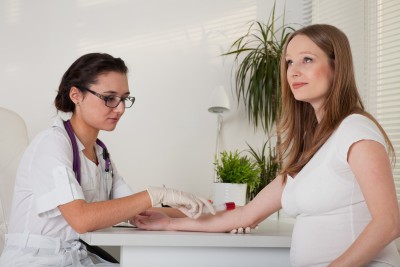What is phlebotomy? A phlebotomist is a person who collects blood samples from patients for analysis in a laboratory. The blood is generally obtained by a venipuncture. This involves the phlebotomist making a sterile penetration of the patient’s vein with a needle and withdrawing blood. Blood for testing may also be obtained by pricking the capillaries in the finger or in the heel of a baby. Sometimes, a prick to the ear can release capillary blood. Phlebotomists are employed in hospital laboratories, doctors’ offices, nursing homes, and any other medical facility. They work under supervision of doctors, nurses and laboratory personnel.
Although some states do not require phlebotomy certification for employment, most states are now requiring it. Even in states that do not require certification, becoming certified will certainly improve a person’s chances of being hired. In fact, certified phlebotomists are in such high demand, that there are many programs available. Prospective phlebotomists can search online for certification courses and should be able to find a program that will meet their needs, whether full-time or part-time, online or in a standard brick and mortar location.
How to find the best phlebotomy class.
In order to be accepted to any phlebotomy training class, a person must have a high school diploma or equivalent. If other qualifications are met, course work can be completed online.
 There are programs allow a person to maintain a full-time job while attending phlebotomy classes. There are also programs that a person can attend full-time to speed up the certification process or a free program sponsored by unemployment offices or nursing homes.
There are programs allow a person to maintain a full-time job while attending phlebotomy classes. There are also programs that a person can attend full-time to speed up the certification process or a free program sponsored by unemployment offices or nursing homes.
Some hospitals and laboratories offer their own training programs. In addition to classroom instruction, students must also spend time in clinical practice. This usually involves unpaid, on-the-job experience.
A Licensed Vocational Nurse (LVNs) or a Licensed Practical Nurse (LPN) may find a referral to a free phlebotomy certification course through a state’s unemployment office. The nurse must be unemployed, but most states have courses to help place unemployed people and there is a higher demand for LVNs and LPNs who have phlebotomy certification than for those who do not.
Also, some local nursing homes will sponsor an LVN or LPN through a phlebotomy certification course. If so, the facility will require a certain period of time for the nurse to work at the nursing home following completion of the course.
Many junior colleges or vocational schools that have LPN programs also have good programs leading to phlebotomy certification.
What is involved in phlebotomy certification.
In order to obtain phlebotomy certification from the American Society of Phlebotomy Technicians (ASPT) or to become a National Certified Phlebotomist, an applicant must do the following:
Complete an accredited phlebotomy training program that includes instruction on the following:
- Safe, efficient ways to work in the laboratory and proper use of vacuum tubes, needles and syringes.
- How to collect blood samples by way of venipuncture.
- How to collect blood samples by capillary pricks, such as pricking fingers or heels of babies.
- Proper handling of collected specimens.
- How to label and sort specimens and prepare them for testing.
- Communication skills to use with patients to put them at ease.
- How to deal with emergency situations and procedures.
- Medical terminology.
- Instruction on anatomy and physiology of the circulatory system.
- Training on socio-cultural skills on how to interact with patients.
- Pay the requisite application fee.
- Provide proof of one-year part time employment or six months of full-time employment as a phlebotomist.
- Submit documentation of completion of 100 successful venipunctures and five skin punctures.
- Submit a letter from a supervisor, on appropriate letterhead, attesting to the above or to the fact that a majority of the applicant’s work is regularly procuring blood samples.
- Be a current member of ASPT.
- Obtain a passing score on the certification exam.
In order to maintain certification, phlebotomists must complete six continuing education hours every year.
Advantages of phlebotomy certification to an LVN or LPN
 LVNs and LPNs work in the same setting as Registered Nurses (RNs). This includes medical offices, hospitals, surgery centers, convalescent homes and other institutions providing medical care.
LVNs and LPNs work in the same setting as Registered Nurses (RNs). This includes medical offices, hospitals, surgery centers, convalescent homes and other institutions providing medical care.
In most states, LVNs and LPNs perform many of the same tasks as RNs but they do so under the RNs supervision. LVNs and LPNs who are also a certified phlebotomists increase their job opportunities, since many medical settings need an assistant who can draw blood for laboratory testing.
Not only are there more job opportunities for LVNs and LPNs with phlebotomy certification, they also make more money that those without such certification.
Those who are considering a career as an LVN, LPN or phlebotomist should contact a school representative for more information and for guidance in enrolling in appropriate courses.
Phlebotomy Certification and Training for LPN/LVN
What is phlebotomy? A phlebotomist is a person who collects blood samples from patients for analysis in a laboratory. The blood is generally obtained by a venipuncture. This involves the phlebotomist making a sterile penetration of the patient’s vein with a needle and withdrawing blood. Blood for testing may also be obtained by pricking the capillaries in the finger or in the heel of a baby. Sometimes, a prick to the ear can release capillary blood. Phlebotomists are employed in hospital laboratories, doctors’ offices, nursing homes, and any other medical facility. They work under supervision of doctors, nurses and laboratory personnel.
Although some states do not require phlebotomy certification for employment, most states are now requiring it. Even in states that do not require certification, becoming certified will certainly improve a person’s chances of being hired. In fact, certified phlebotomists are in such high demand, that there are many programs available. Prospective phlebotomists can search online for certification courses and should be able to find a program that will meet their needs, whether full-time or part-time, online or in a standard brick and mortar location.
How to find the best phlebotomy class.
In order to be accepted to any phlebotomy training class, a person must have a high school diploma or equivalent. If other qualifications are met, course work can be completed online.
Some hospitals and laboratories offer their own training programs. In addition to classroom instruction, students must also spend time in clinical practice. This usually involves unpaid, on-the-job experience.
A Licensed Vocational Nurse (LVNs) or a Licensed Practical Nurse (LPN) may find a referral to a free phlebotomy certification course through a state’s unemployment office. The nurse must be unemployed, but most states have courses to help place unemployed people and there is a higher demand for LVNs and LPNs who have phlebotomy certification than for those who do not.
Also, some local nursing homes will sponsor an LVN or LPN through a phlebotomy certification course. If so, the facility will require a certain period of time for the nurse to work at the nursing home following completion of the course.
Many junior colleges or vocational schools that have LPN programs also have good programs leading to phlebotomy certification.
What is involved in phlebotomy certification.
In order to obtain phlebotomy certification from the American Society of Phlebotomy Technicians (ASPT) or to become a National Certified Phlebotomist, an applicant must do the following:
Complete an accredited phlebotomy training program that includes instruction on the following:
In order to maintain certification, phlebotomists must complete six continuing education hours every year.
Advantages of phlebotomy certification to an LVN or LPN
In most states, LVNs and LPNs perform many of the same tasks as RNs but they do so under the RNs supervision. LVNs and LPNs who are also a certified phlebotomists increase their job opportunities, since many medical settings need an assistant who can draw blood for laboratory testing.
Not only are there more job opportunities for LVNs and LPNs with phlebotomy certification, they also make more money that those without such certification.
Those who are considering a career as an LVN, LPN or phlebotomist should contact a school representative for more information and for guidance in enrolling in appropriate courses.